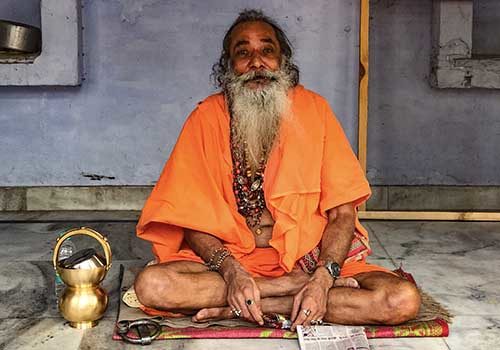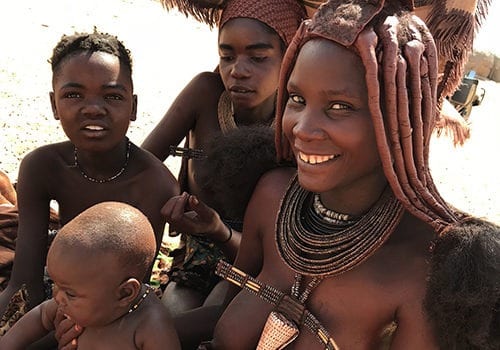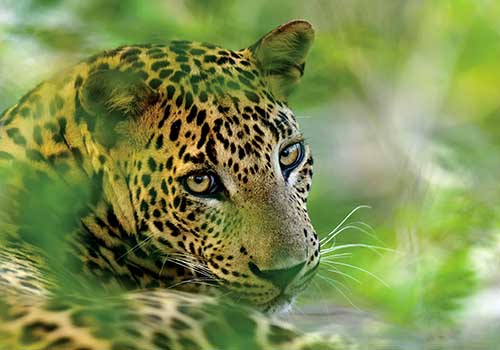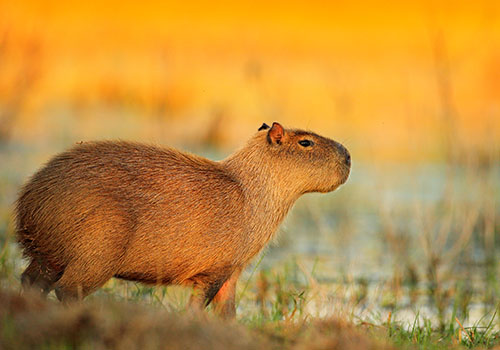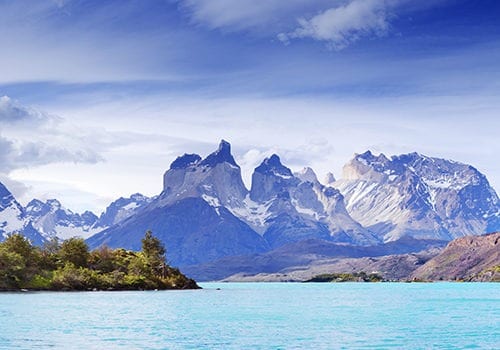DISPATCHES FROM EXOTIC LANDS
There is no ‘best time’ for a Serengeti safari – it’s simply a case of prioritising what you would most like to see and, if witnessing the great migration is important to you, being in the right place at the right time. However, it is important to bear in mind that rain and wildlife pay little heed to schedules and even the best-planned Serengeti safari is subject to the whims of Mother Nature!
The following patterns have served us well for decades, but with climate change causing significant shifts in weather patterns, this should be treated as a guide only.

Map credit: The Africa Hub
January
The new year brings the short dry season, and with it one of the best times of year to visit the Serengeti. The odd spot of rain may still linger following the short rains, but on the whole, the weather is good with clear air and blue skies. Given the recent rains, the landscape is lush and green with wildflowers blooming and many resident bird species sporting breeding plumage. The wildebeest are gathering in the south of the Serengeti for calving season, which attracts predators from far and wide.

February
February can be hot in the Serengeti (around 33°C) but is a brilliant time to visit as the wildebeest generally calve within the first three weeks of the month. There are babies everywhere and some tense predator-prey interactions. Birders will enjoy spotting northern hemisphere migrants alongside breeding resident species.
March
Newly born wildebeest calves are roaming the southern grass plains, and the predators can’t believe their luck. As peak season wanes, visitor numbers tend to drop off but there is an increased chance of rain.
April
Rain generally falls in the Serengeti. Off-peak pricing kicks in and visitor numbers are low so you may find you have camps and vehicles all to yourself – now is the time of year for an exclusive experience at an affordable rate! The landscape is lush and green, which looks stunning in photos, but the dense vegetation does make spotting animals more difficult. Many guides quote this as their favourite time of year in the Serengeti.

May
Rain continues to fall, visitor numbers remain low, and the wildebeest migration is making its way north, towards the western Serengeti and the Grumeti River, where you might witness a crossing if you are lucky. Rain usually falls in bursts (rather than all day, every day), and the landscape is incredibly pretty, so the rewards can be rich for those who are willing to risk a shower.
June
The migration tends to be in central and western Serengeti, with river crossings occurring with some regularity. Rain eases as the dry season creeps in, along with winter which brings cool mornings and evenings – wear layers!

July
The rains are over, and the landscape starts to dry out making game viewing a little easier going. The migrating wildebeest are making their way to the northern Serengeti, with some of the early herds starting to cross the Mara River for heart-stopping sightings. Visitor numbers are on the rise and prices increase accordingly as peak season arrives.
August
Wildlife gathers around perennial water sources as the plains dry out creating good sightings and a wealth of inter-species interactions. There are almost daily river crossings happening along the Mara River as the migration heads ever northwards, seeking fresh grass. Conditions are lovely with fine, dry days and cool evenings, but this peak season coincides with European school holidays making August a busy time in the Serengeti.
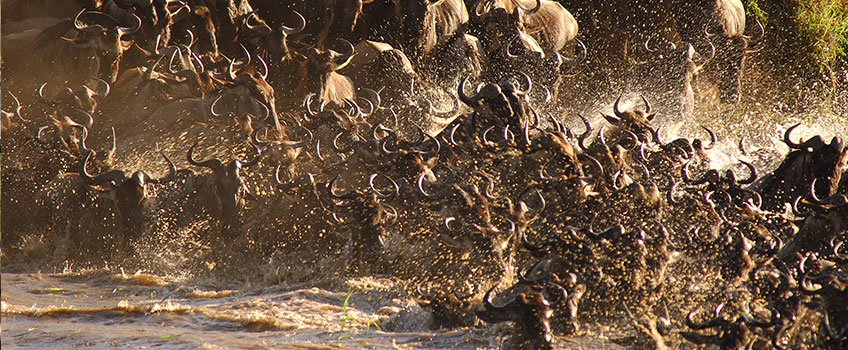
September
The land has dried out and the bush has thinned creating excellent game viewing conditions. Wildlife gathers around permanent water sources generating reliable sightings. River crossings are still occurring on a regular basis in the north of the Serengeti but visitor numbers subside a little as school holidays end. This is an excellent time to visit.
October
The tail end of the dry season brings excellent game viewing but the bush can look a little tired and things can get dusty given the lack of rain. Visitor numbers are significantly lower than they have been for the past few months and prices start to drop accordingly.
November
The short rains usually arrive by the end of the month but can be unpredictable and localised. Green shoots push through the brown earth where water falls and the bush breathes a sigh of relief. Given the sporadic nature of the rain, the location of the migration can be unpredictable, but generally the herds will start to move south, lingering in the central Serengeti if weather conditions are favourable.

December
Rain falls a little more reliably, although it tends to fall in short bursts that won’t ruin a Serengeti safari, and temperatures sit at around 27°C. Visitor numbers shoot up as the festive season arrives, and prices follow suit. Early booking is essential if you want to go on safari over Christmas, especially if you are travelling as a family group. The migration continues to munch its way southwards towards the short grass plains where the wildebeest will give birth.

In conclusion, if you want to photograph a bird in breeding plumage surrounded by greenery then you’ll probably want to travel in January. If you’re looking for an exclusive experience but don’t have the budget for a private safari its worth considering April. And if it’s drama you’re after, you’ll probably enjoy the calving season in February or the river crossings in August.
There is no ‘best’ time for a Serengeti safari, just a season that’s best suited to you.



